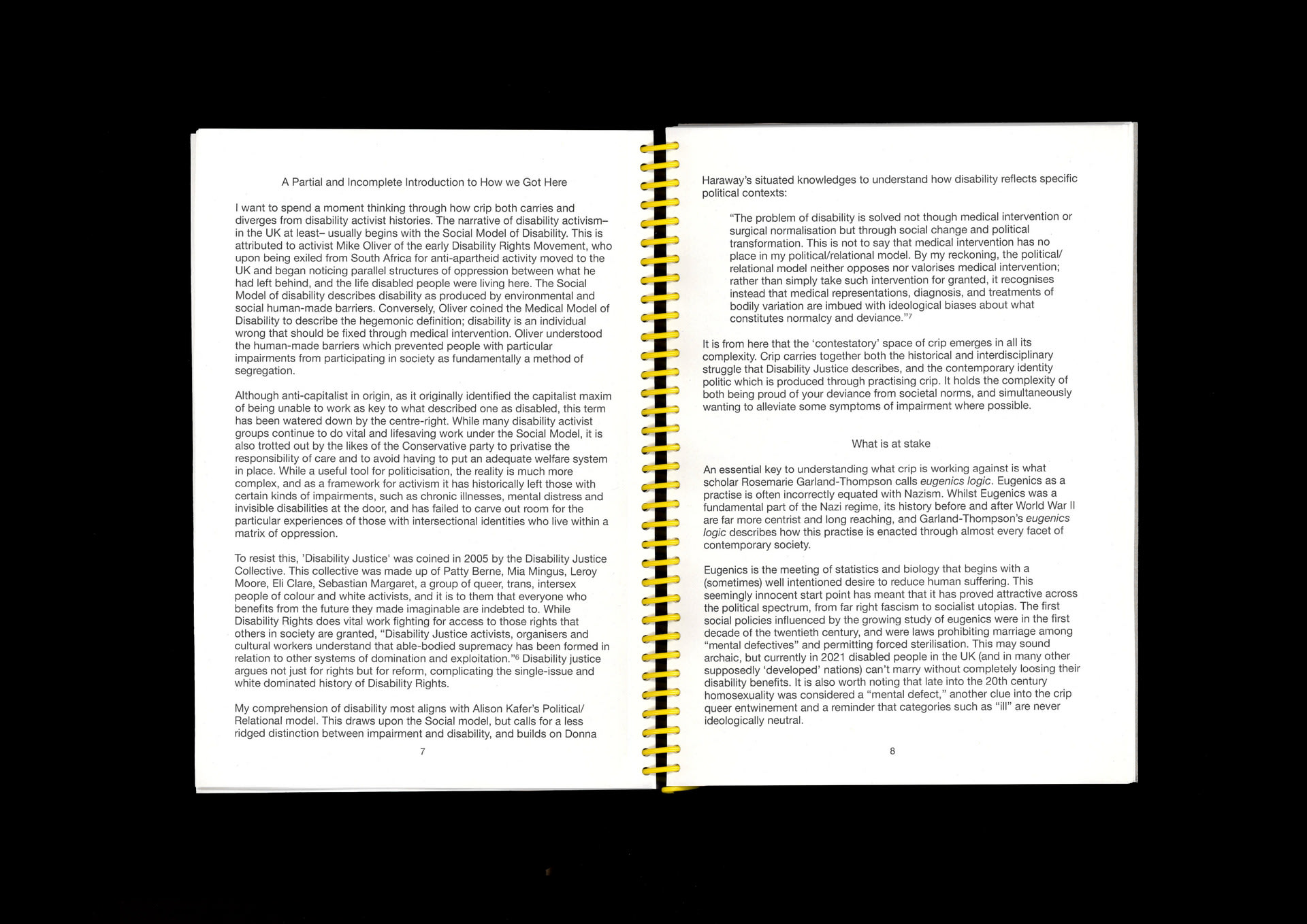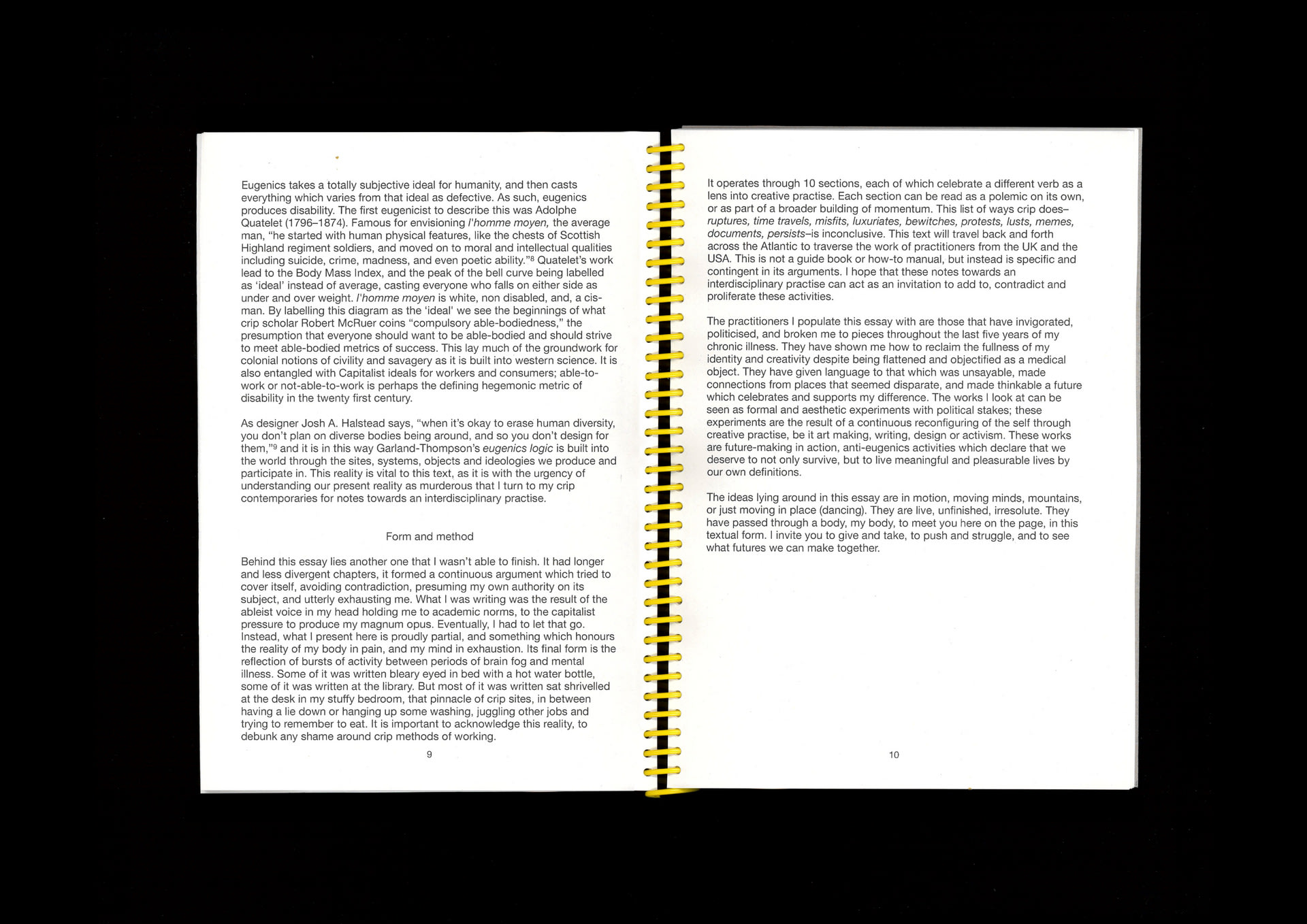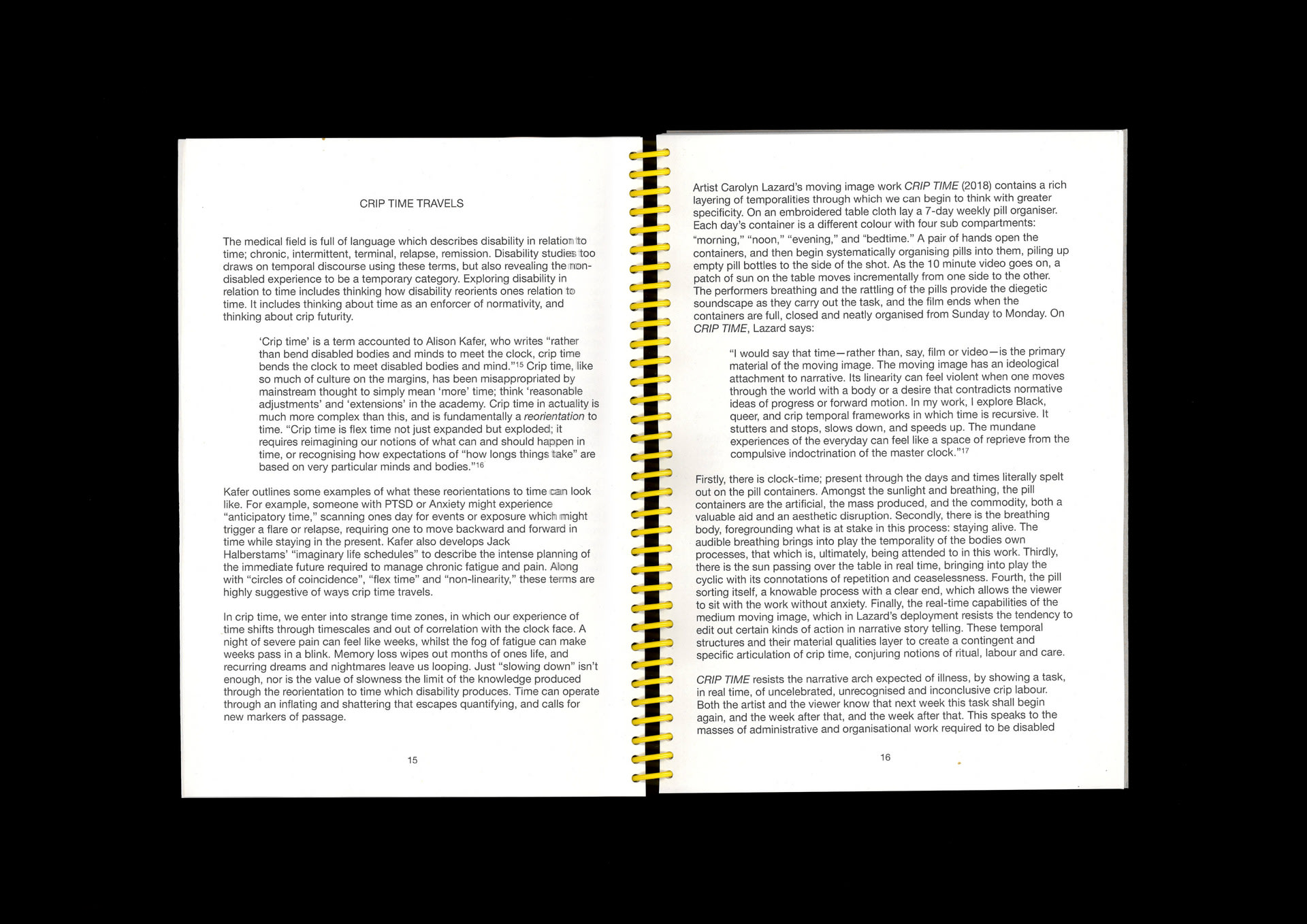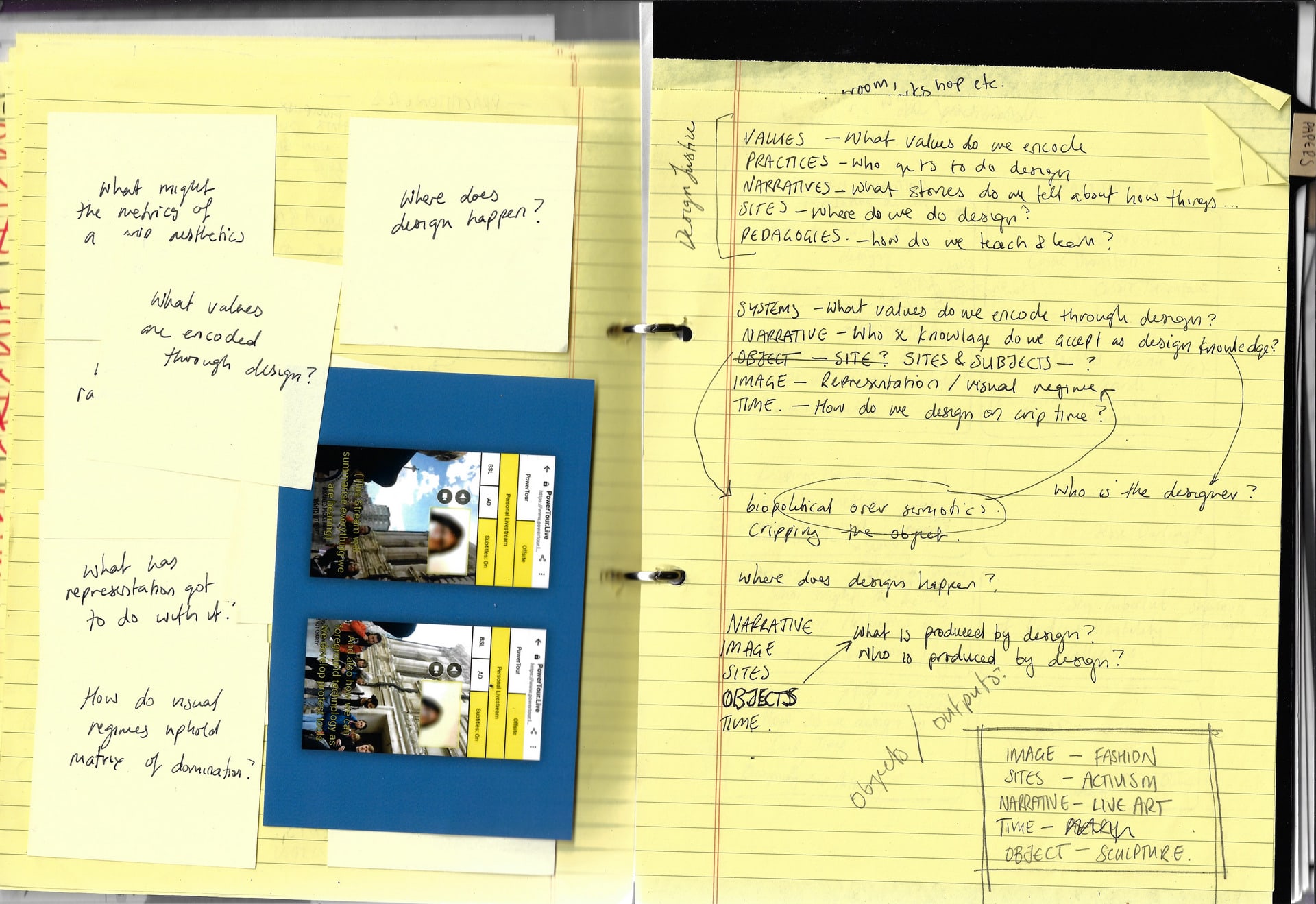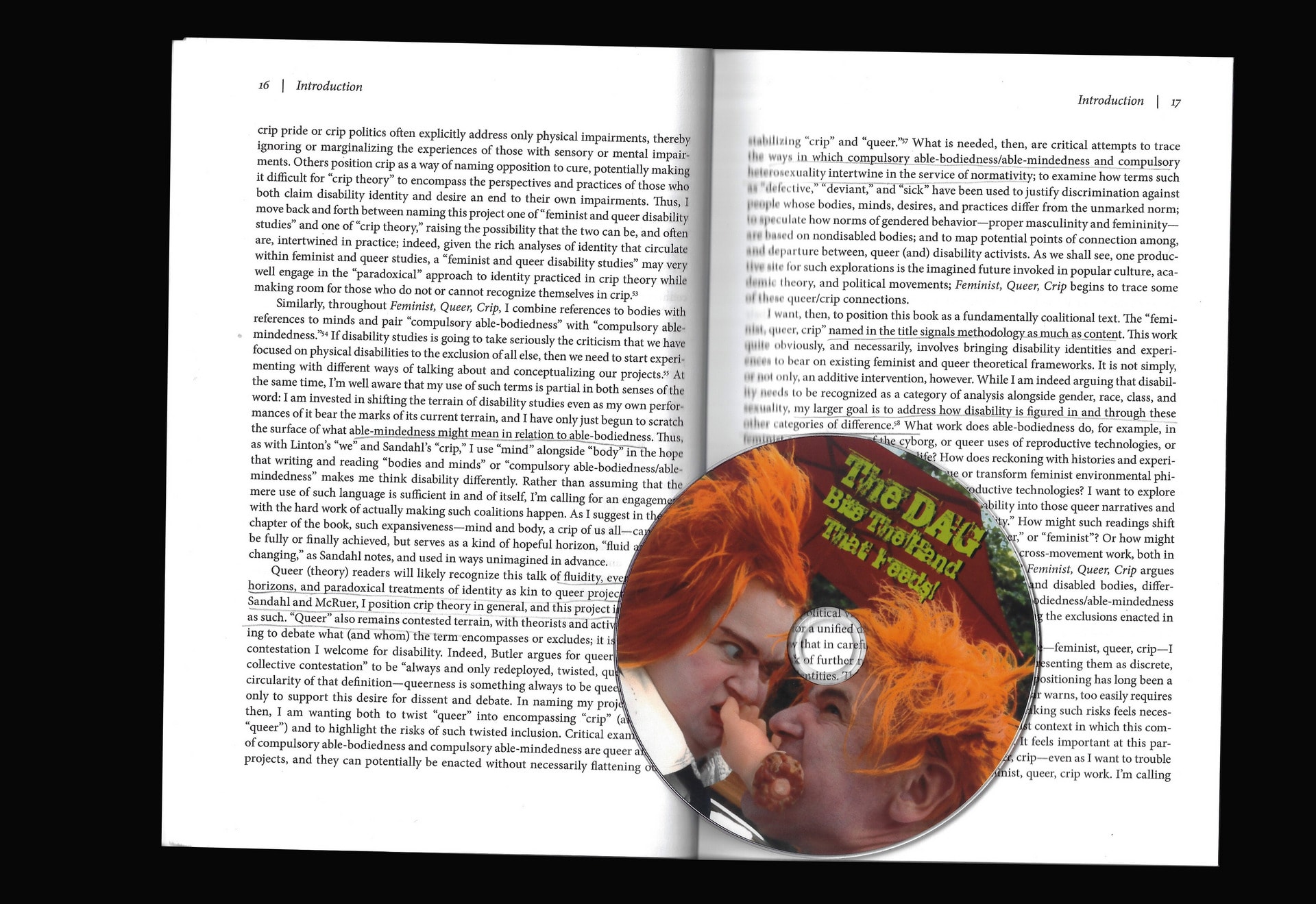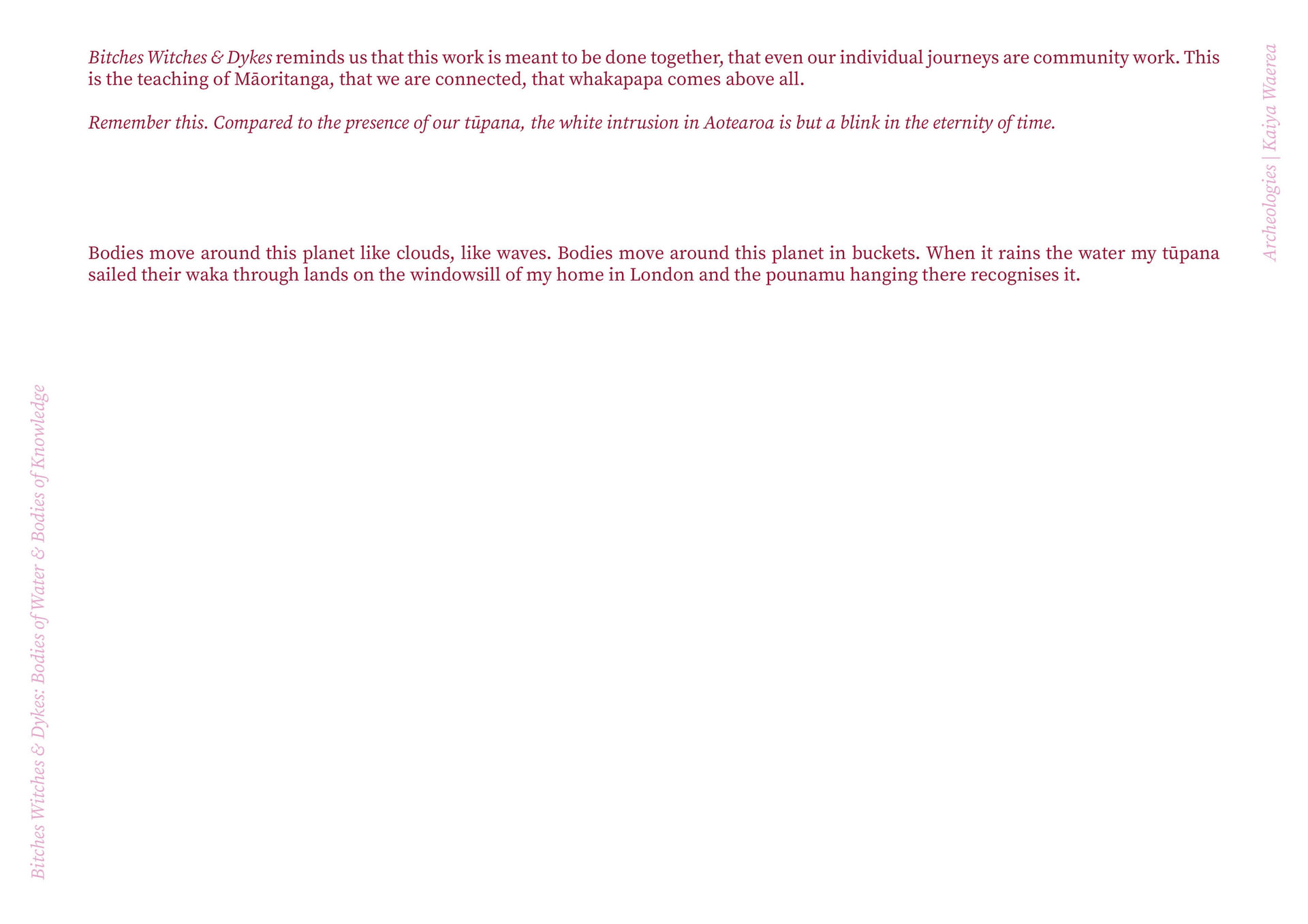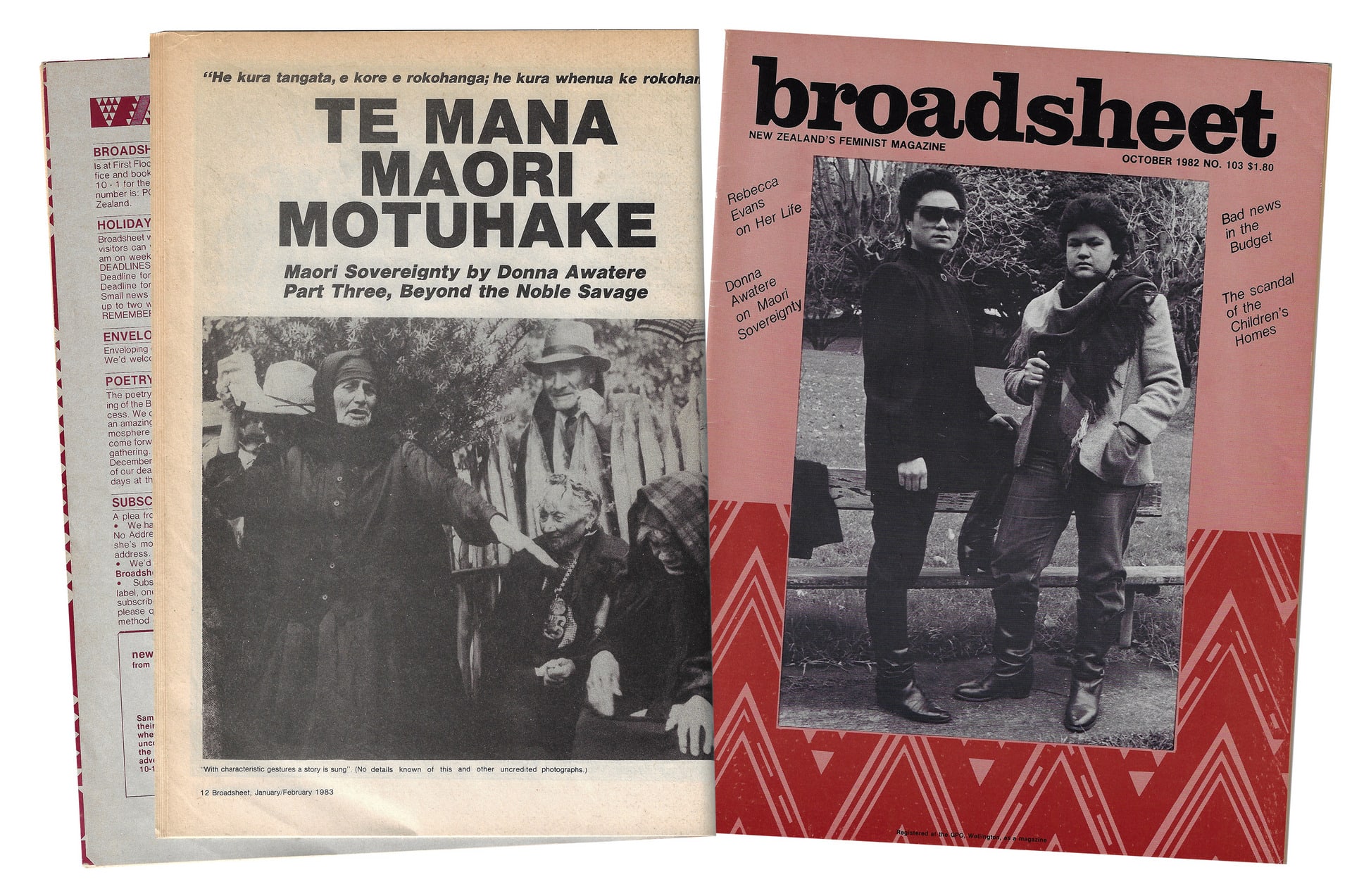Sickness, being, fucking, caring, menstruating,
writing, soreness. Sleeping.
Image, surface, and throwing stones. Scale.
Precarity, alternative economies,
light, mass, and everything you can see is holding you.
Pluralities, multitudes, murmurings.
Leaps of faith.
I am a chronically ill writer, designer, and publisher from Aotearoa, living in London. My writing has been featured in the RCA Design & Philosophy Journal, Ache Magazine, Sick Magazine, and DreamsTimesFree. I have had work exhibited at Lunchtime Gallery (current), South Kiosk Gallery, Transmediale and Alchemy Film & Arts, and have given talks and workshops for NN Contemporary, Control Shift Network, Dash Disability Arts and the Remote Body amongst others.
Prior to studying at the Royal College of Art, I graduated from the BA Design programme at Goldsmiths University of London. During my second year I began Sticky Fingers Publishing with Sophie Paul (also of this graduating cohort). We started working together out of a shared concern for what knowledge feels like, and since have developed Sticky Fingers into a feminist intra-dependant print publishers working with over 75 writers across the last three years to publish work too terrifying, messy or fragile to be published anywhere else. We are concerned with feminist, queer and crip publishing methodologies and prioritising work dealing with these politics.
Currently, alongside running Sticky Fingers Publishing I am an associate lecturer on the BA Graphic Design programme at Camberwell College of Art; I am one third of design trio Access Power Visibility working on Healing Justice London’s Death by Welfare project; I am a support worker for artist and poet Abby Nocon; and a freelance writer and designer.





